TokyoScope News: Angel’s Egg Hatches Again, Godzilla Hammers, and a Journey Through Showa-Era Japan
A round up of recent Japanese pop culture headlines edited by Patrick Macias
Celebrating 40 Years of Angel’s Egg: New T-Shirts and Tote Launch in Japan
To mark the 40th anniversary of the 1985 anime film Angel’s Egg, a special line of Japan-exclusive merchandise has been released to coincide with the reissue of the film’s original soundtrack. The collection includes new T-shirts and a tote bag featuring artwork by Yoshitaka Amano, originally created for the 1985 soundtrack. These items celebrate the enduring legacy of director Mamoru Oshii and Amano’s cult classic, which is also being re-released in Japan with a 4K remaster, alongside new LP and UHQCD editions of the soundtrack.
The T-shirts, available in black and white, are a collaboration with long-established Japanese apparel maker Kume Sen-i. They prominently feature Amano’s haunting illustration and retain the film’s distinctive, decadent aesthetic. Each shirt also bears credits for the film’s creators—Mamoru Oshii, Yoshitaka Amano, and composer Yoshihiro Kanno—underscoring the creative partnership that shaped Angel’s Egg. Priced at ¥9,900 each, the shirts are made in Japan and designed for both comfort and artistic fidelity.
Completing the lineup is a cotton tote bag printed with the same Amano artwork, set against a soft lavender background. Sized to fit an LP and featuring the same creator credits, the tote is both practical and collectible. It is also priced at ¥9,900. All items are scheduled for release on June 20, 2025, and are available for pre-order exclusively through HMV&BOOKS online .
Smash Like a Kaiju: The Godzilla Hammer Is Here
Straight from the world of Toho kaiju comes the Godzilla Hammer. This officially licensed hammer was crafted using detailed 3D scans of the actual Godzilla suit foot used in filming Godzilla, Mothra and King Ghidorah: Giant Monsters All-Out Attack. Now, fans can get an up-close look at the sole of Godzilla’s foot—a view rarely seen even on screen.
The hammer faithfully replicates the unique texture and contours of Godzilla’s foot, making it both a striking display piece and a fun, functional tool. The underside of the foot is rendered with such precision that it invites inspection from every angle—perfect for collectors, fans, or anyone who wants to bring a little kaiju power to their toolbox.
Available now through IronFactory Castem on Rakuten, the Godzilla Hammer is part of a larger line of Godzilla-inspired collaboration items. Whether you're looking to drive a nail or just admire the craftsmanship, this one-of-a-kind hammer delivers the monster impact you didn’t know you needed.
Showa Nostalgia on Display: Rare Toys and Subculture Treasures Exhibit Opens
A new exhibition celebrating Japan’s Showa era has opened in Hachinohe City, Aomori Prefecture, offering a nostalgic look at toys and subculture from a formative period in modern Japanese history. Titled The Hachinohe Showa History and Subculture Exhibition, the show features more than 300 items from the personal collection of Katsutoshi Yasuda, a dedicated collector of vintage toys and records.
Timed to mark both the 80th anniversary of the end of World War II and the 100th year since the beginning of the Showa era, the exhibition arranges its displays chronologically, tracing how toys evolved in postwar Japan. Yasuda explains that many of the earliest examples on view—particularly tin toys—were born out of necessity during a time of national scarcity.
“Materials were hard to come by back then,” Yasuda says. “Japanese toy factories would collect used cans from the American soldiers stationed in Japan and repurpose them into toys. If you look at the back of some pieces, you can clearly see how they reused whatever was available.”
One such example is a tin train toy, whose underside is made from recycled batteries. During this early period, many toys were produced primarily for export, before shifting toward the domestic market in the 1950s as Japan’s economy stabilized and grew.
By the late 1950s, Japanese children began receiving more attention from toy manufacturers, and the rise of television heroes helped reshape the industry. One of the exhibition’s highlights is a trio of rare Moonlight Mask figures, which Yasuda considers essential to the legacy of Japanese superhero culture.
“When talking about the original Japanese heroes, you can’t leave out Moonlight Mask,” Yasuda says. “That’s why I included him in the exhibit. These three figures together are quite valuable—worth about one million yen.”
The show also includes a variety of mechanical and character-driven toys from later in the Showa era, such as wind-up figures that spark when activated and masks that reveal hidden faces underneath. Some of these items now fetch prices around 100,000 yen, reflecting their cultural and collector value.
For Yasuda, the appeal of these toys goes far beyond nostalgia. “They have a kind of flavor and warmth you just don’t find in modern toys,” he reflects. “At the beginning of the Showa period, people were poor, and the toys were quite humble. But as the years went by, they became more elaborate and inventive. Seeing them all laid out like this really helped me understand the history for the first time.”
The Hachinohe Showa History and Subculture Exhibition runs through June 15 in Hachinohe City.



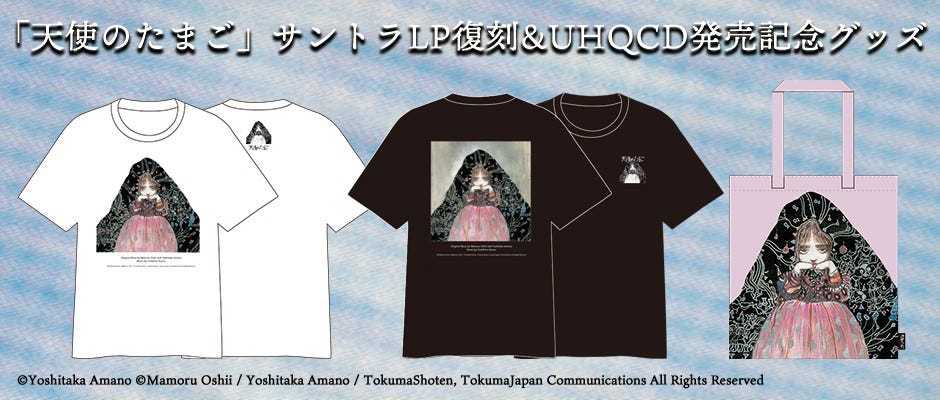
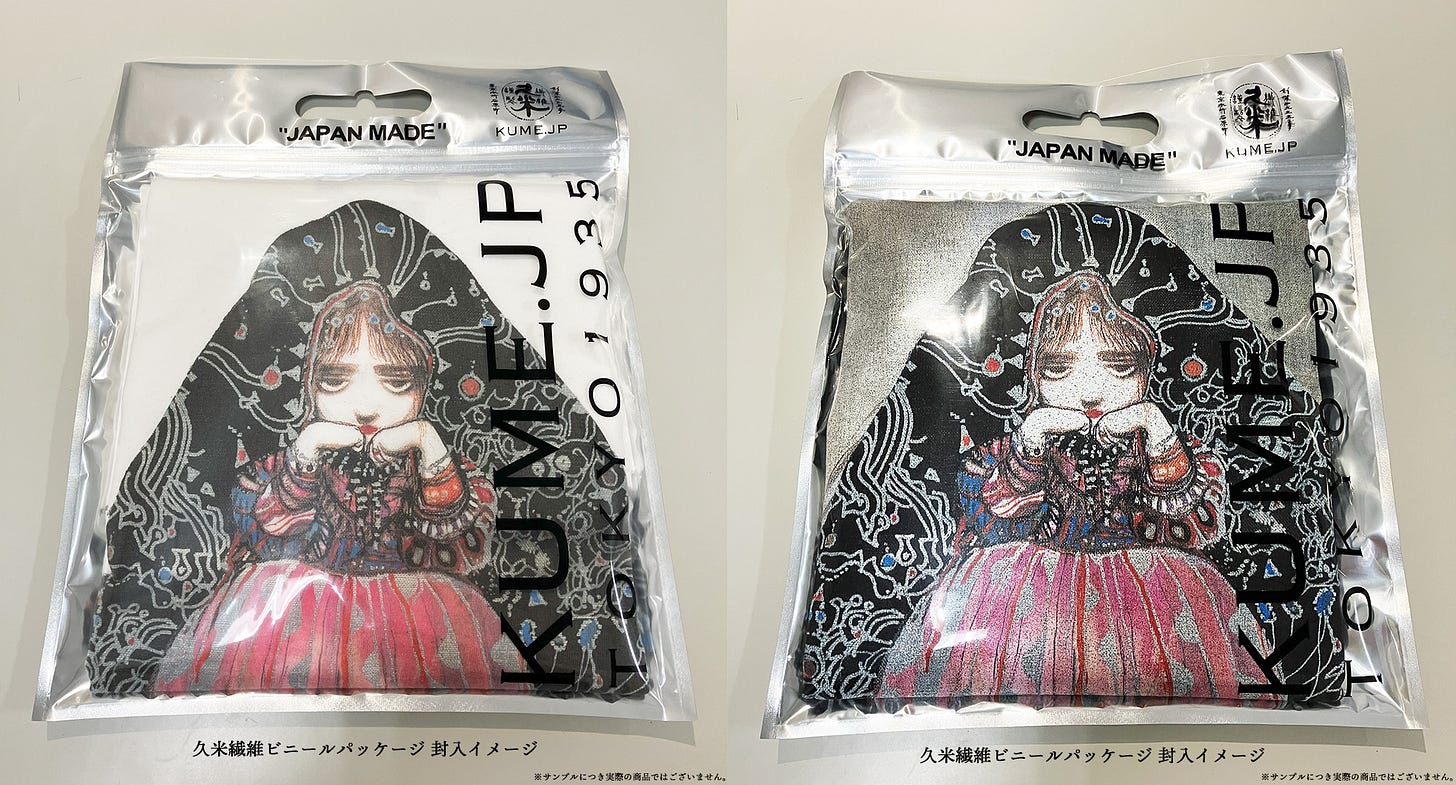
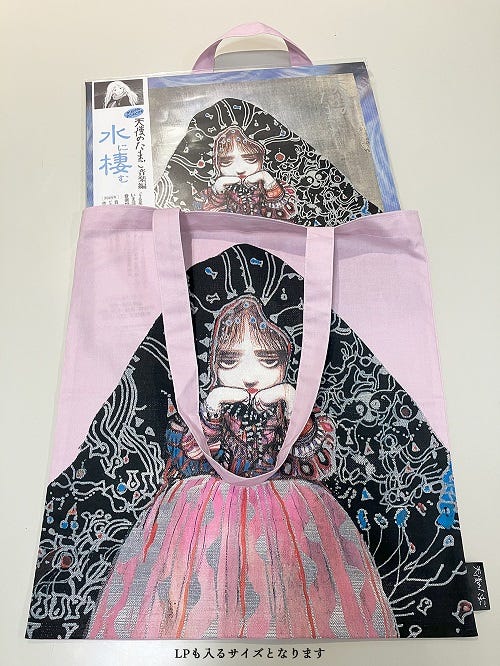
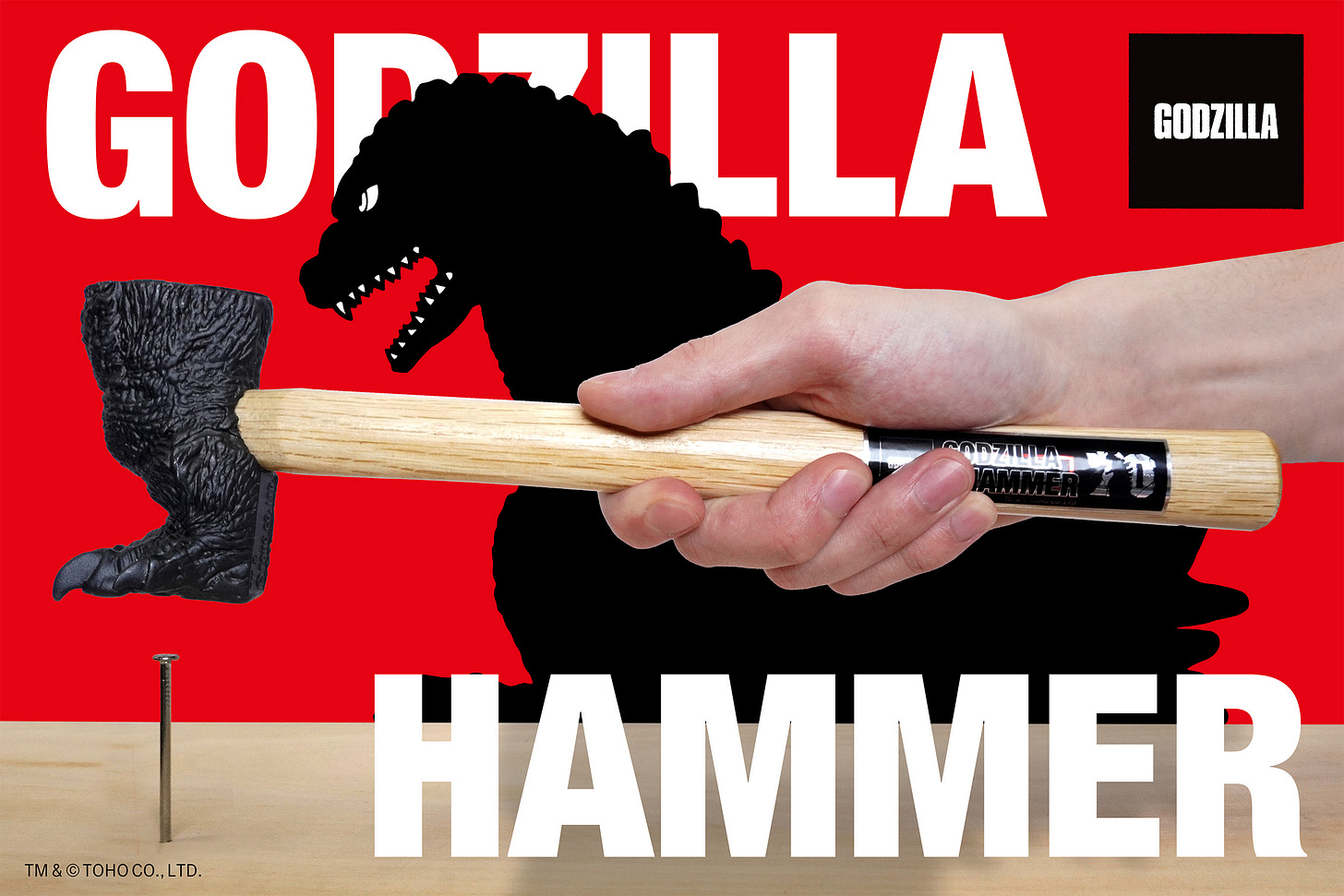
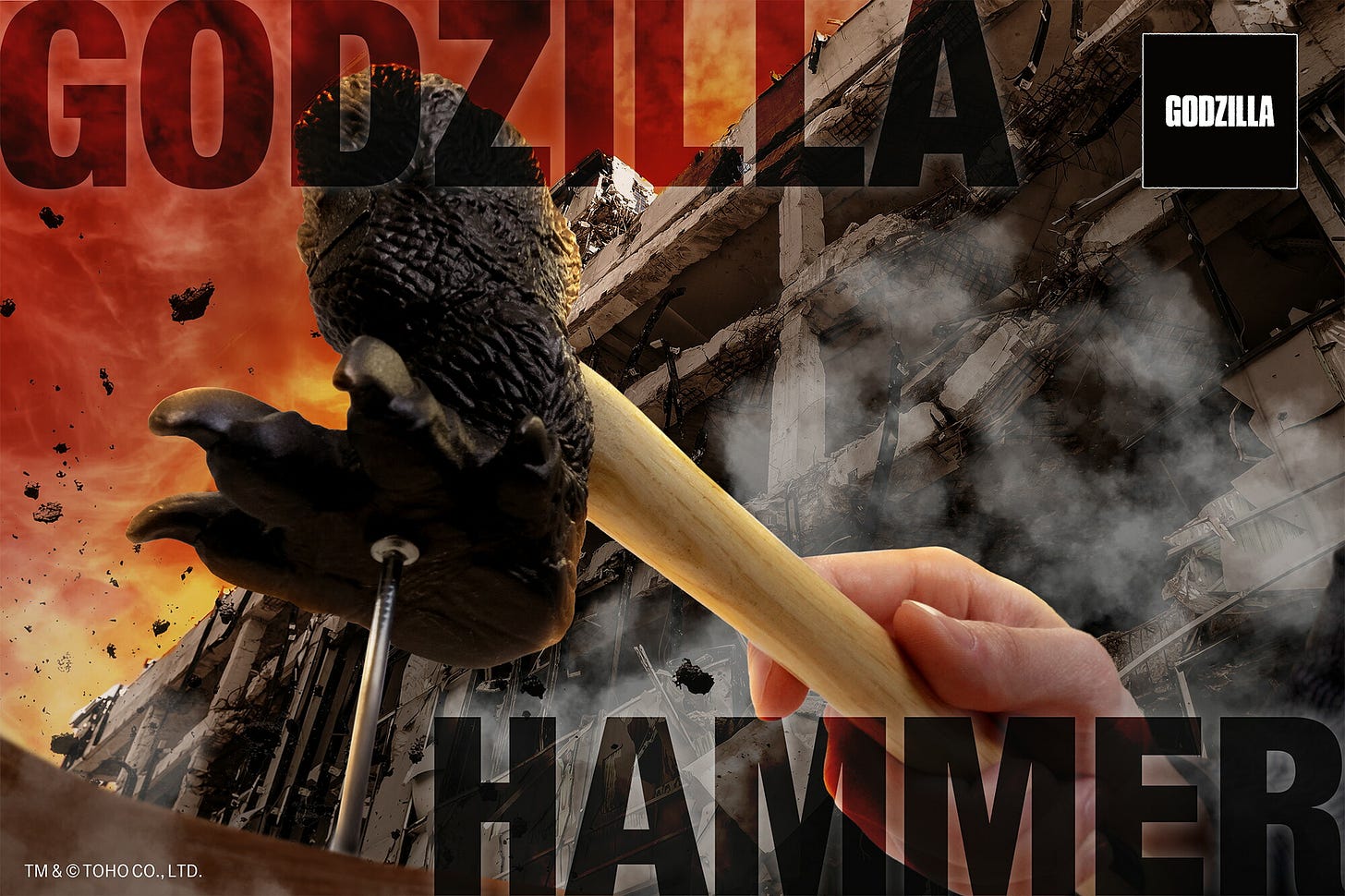
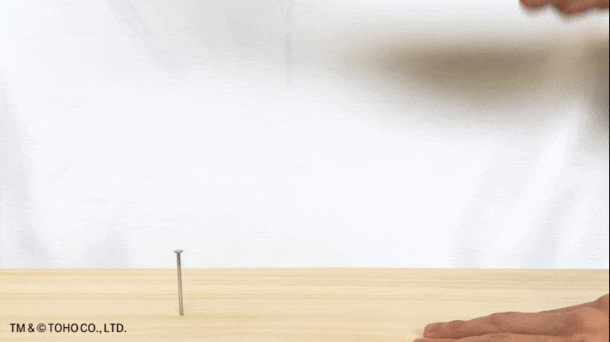
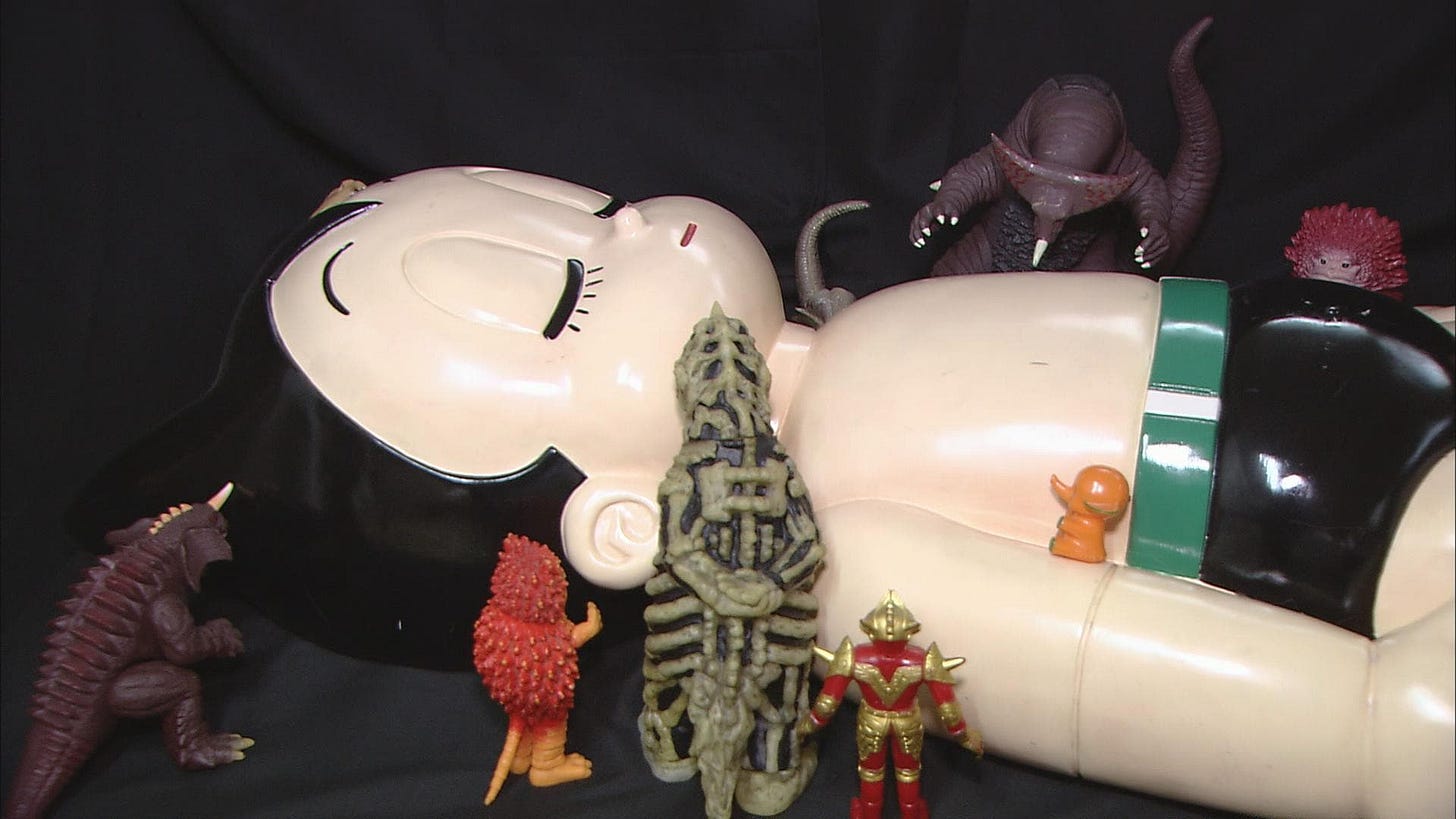
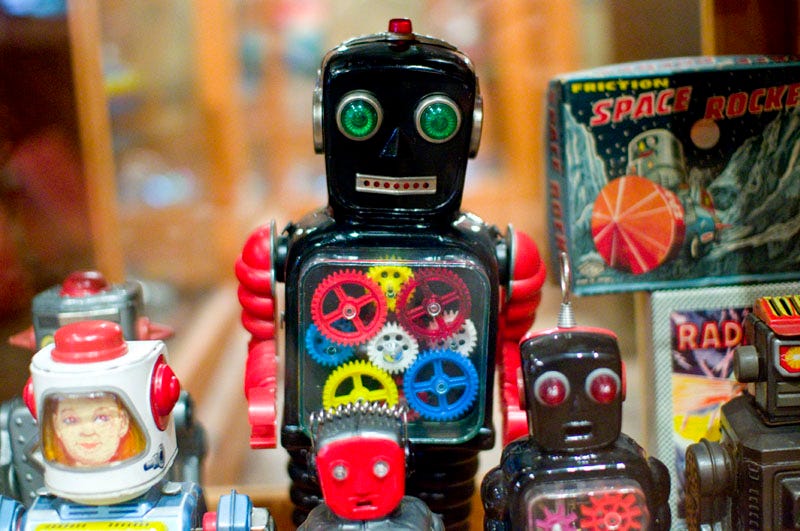
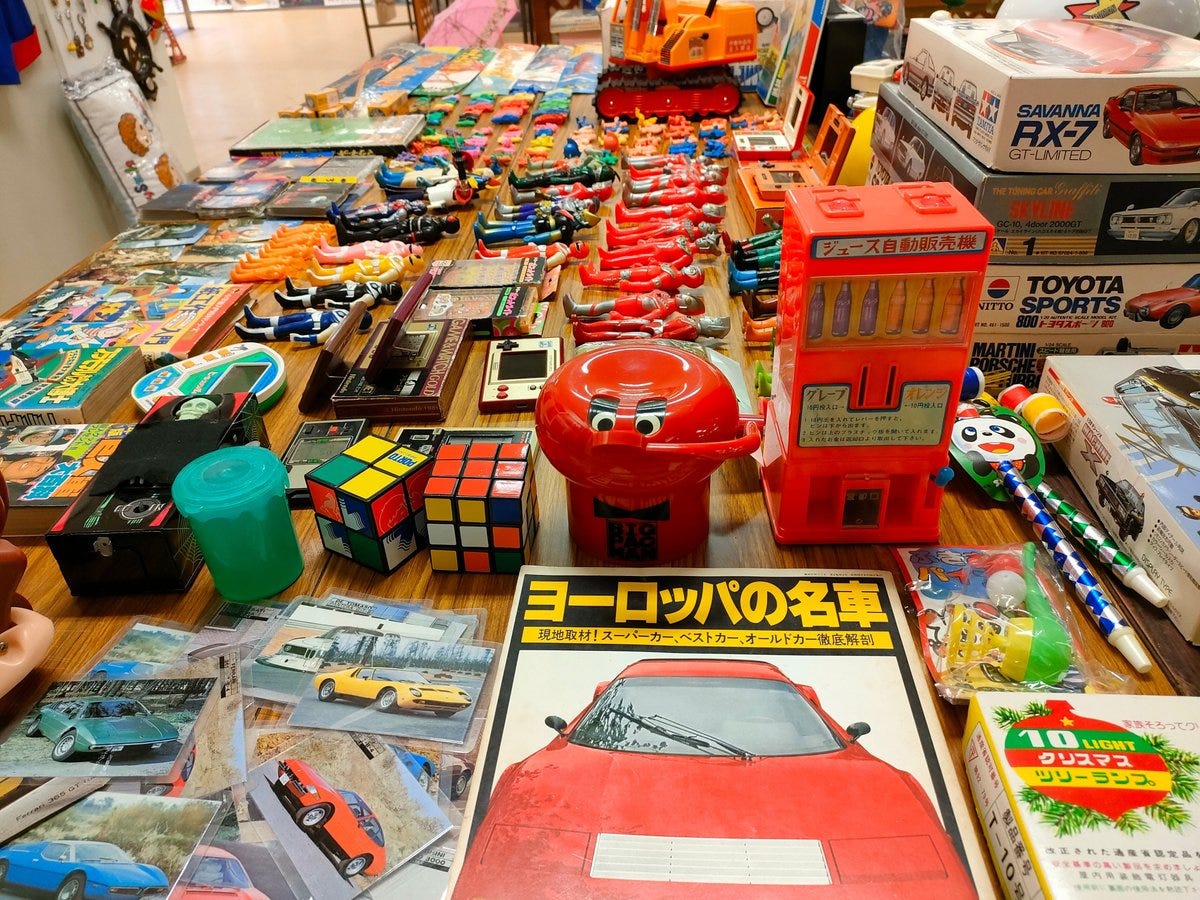

The last time I saw Angel's Egg I had bought a bootleg VHS tape at San Diego Comic Con back in the mid 90s!
I want the Godzilla hammer! But, I feel like it is a missed opportunity it doesn't trigger Big G's foot stomping sound when you hit something with it. Maybe a deluxe version in the works?? :)